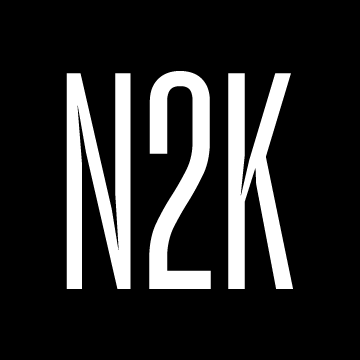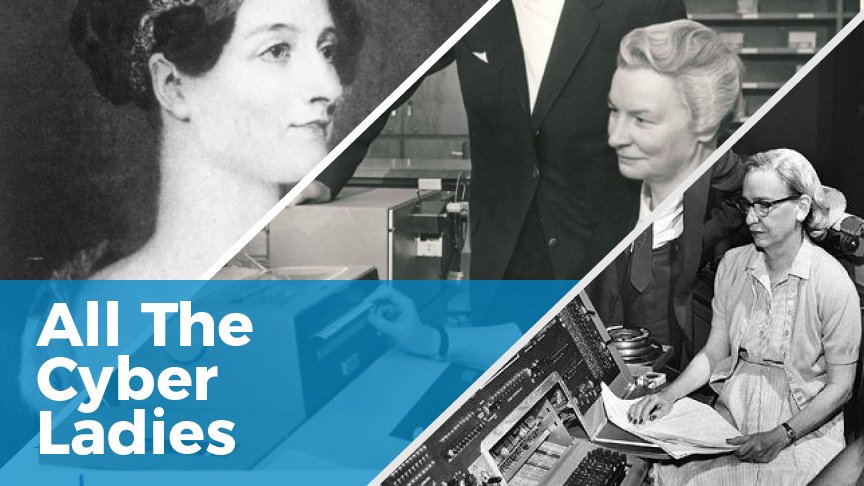All The Cyber Ladies
March has been celebrated as National Women’s History Month since 1987 and this year before the month draws to a close, we’re celebrating the accomplishments of women who paved the way in computer science as a precursor of the contemporary cybersecurity industry. Let’s review a few of the ladies who have blazed the trail for today’s cybersecurity practitioners – both women and men.
Grace “Amazing Grace” Hopper
Grace Murray Hopper kicked off her computer science career with a bang by earning a B.S in mathematics and physics at Vassar College and a M.S. Degree and a PhD in mathematics at Yale University. In 1943, she joined the United States Navy Reserve, and after the breakout of WWII she applied for the W.A.V.E.S. (Women Accepted for Volunteer Emergency Service) program, a division dedicated to “free up” male personnel for sea duty. Later on, she worked as a researcher in a computation lab at Harvard University on the Mark I, II, and III computers.
Soon after leaving Harvard, Hopper returned to the U.S. Navy and continued to make pioneering accomplishments in the scheme of computer science and code. In 1959 Grace Hopper was asked to serve as the technical consultant for Conference on Data Systems Languages, a consortium that developed a standard programming language that could be used universally on any computer. Her beliefs that programming languages should be as easily understood as the English language highly influenced and catalyzed the development of COBOL (Common Business-Oriented Language). COBOL served as the backbone of every subsequent programming language which was built upon Hopper’s work. Hopper advocated for the functionality of a user-friendly business software program and promoted its use in the military. To this day COBOL is still widely used in business, finance, and administrative systems.
Hopper was referred to as “Amazing Grace” by her subordinates due to her guidance and leadership. In 1985 she was appointed to Rear Admiral, and at the age of 79 retired from the United States Navy, serving as the oldest serving officer in the U.S. Armed Forces. She was the first woman to receive the highest esteemed technology award when she was given the National Medal of Technology and Innovation by George H. W. Bush in 1991. Her life’s work was acknowledged with many accolades, including the receipt of over 40 honorary degrees, and several awards and scholarships were named after her. Grace Hopper’s accomplishments forever changed the world of computer science.
Ada Byron – The First “Computer” Programmer
Associating the field of computer science with the early 19th century may be difficult to believe, but for Ada Byron it was her reality. Born in 1815, Ada Byron was raised by her mother, Lady Byron, who didn’t want her daughter to turn out like her father, a romantic poet. She steered her daughter’s education to focus on mathematics. Lady Byron’s motherly guidance was appropriate since Ada saw the poetry in math. At the young age of 17, Ada met Charles Babbage, a professor of mathematics at Cambridge. He showed her plans for a mechanical machine, known as the Difference Engine, that would be able to do complicated mathematical calculations – a design outlining an early analog version of our modern-day calculators.
The source of Ada’s everlasting fame began when Babbage enlisted her aid in the development for the successor to the Difference Engine, an even more ambitious calculating machine, the Analytical Engine. After Babbage received sponsorship and funding to pursue building the Analytical Engine, Italian mathematician, Louis F. Menebra published a memoir in French on the subject of the matter. Ada acted as translator for the memoir, and for nine months she rarely parted from the article, and yet, she felt as if she could write a better paper. She ended up creating a volume of notes that was much more expansive than Menebra’s published paper.
Ada self-identified herself as an “Analyst & Metaphysician” since she understood the plans for the device to the same extent as Babbage, but was an expert at articulating its promise: “developing and tabulating function of any degree of generality and complexity.” Her “Notes” led to future developments, including computer-generated music in addition to many of the concepts dominating today’s most pervasive computer languages. She understood that if one could configure a machine [a computer] that calculated individual numbers and also abstract variables, then it could also weave numbers, musical notes or any kind of symbolic language. She came to the conclusion a computer could have infinite applications and uses. Though Ada only lived to the age of 37 after succumbing to cancer, her contributions to computer science support the notion that she was the founder of scientific computing.
Mary Kenneth Keller – The Pioneering Academic
Did you know the first American woman to earn a doctorate in computer science was a nun? Mary Kenneth Keller, an American Roman Catholic nun, earned her PhD from University of Wisconsin-Madison in 1965. Keller joined the Sisters of Charity in 1932. Studying at DePaul University, she completed a B.S. degree in mathematics in 1943 and a M.S. in mathematics and physics in 1953. Keller studied at various institutions while she was graduate student, including Dartmouth, Purdue, and Michigan University. At Dartmouth, the university broke the “men only rule” and allowed her to work in the computer science department lab. History books will lead us to believe that BASIC (Beginner’s All-purpose Symbolic Instruction Code) was created by John Kemeny and Thomas Kurtz; however, Keller was a key contributor to its development.
Keller’s accomplishments didn’t cease after she aided in the creation of BASIC. She founded and chaired the Computer Science Department at Clarke College in Iowa, serving as its director for 20 years.
“For the first time, we can now mechanically simulate the cognitive process. We can make studies in artificial intelligence. Beyond that, [computers] can be used to assist humans in learning. ”’ – Mary Kenneth Keller
Keller dedicated herself to providing computer access to everyone and to undo the exclusivity of computers accessibility to only scientists, engineers, and technicians. She saw the utility in computers, emphasizing that they’re teaching tools and not merely computing tools. Keller was a visionary and imagined a world where people would become smarter with computers as their technological companions and consequently propel people’s successes.
Turn Inspiration into Action
Woman or man, if you’re inspired by the waves in history caused by these women, then take their lead and be part of the history in the making within the cybersecurity field. In the past, for nearly five years women represented only 11% of the cybersecurity workforce, however it was recently reported female representation has risen to 20%. The needle is moving for women in cybersecurity, and the team at CyberVista is a part of that change. We strive to increase the representation of women by offering scholarships for training programs that’ll aid women to obtain their certifications needed to work in the cybersecurity. Let’s talk about how our 100% online interactive courses can help you earn your CISSP, CISM, CEH, and Security+ certifications.


